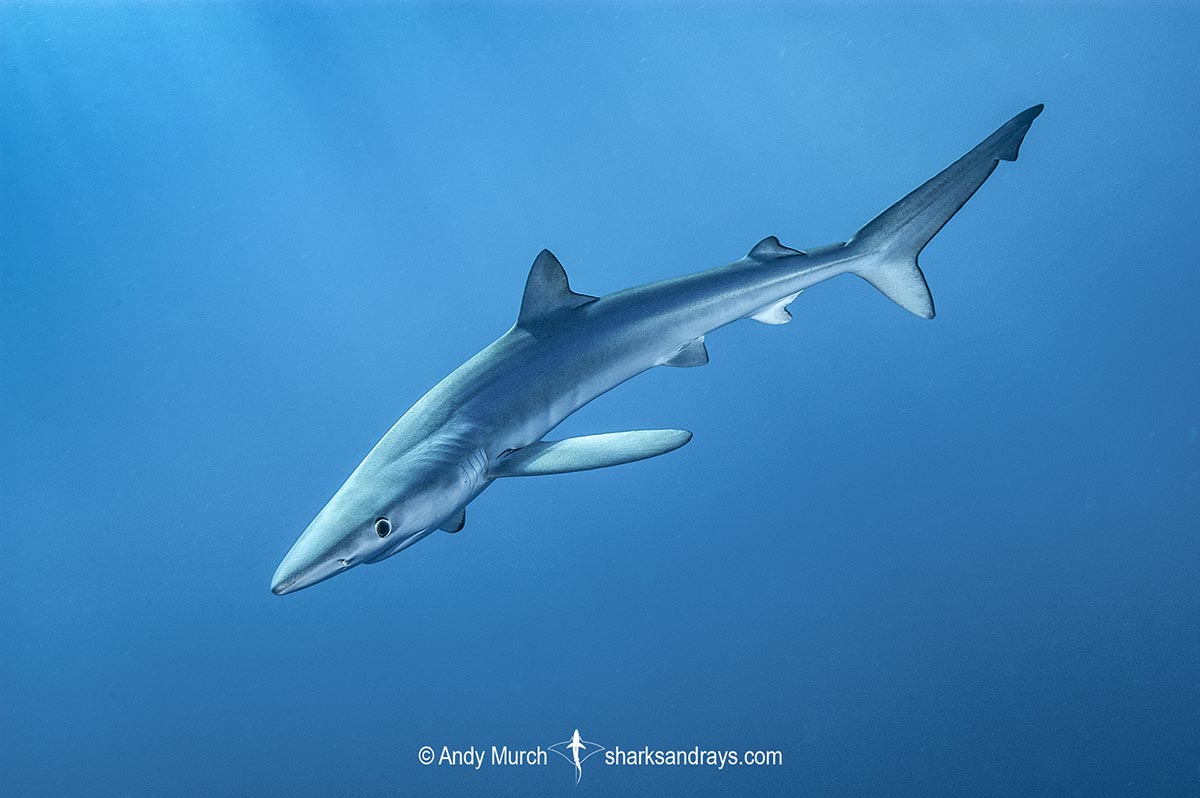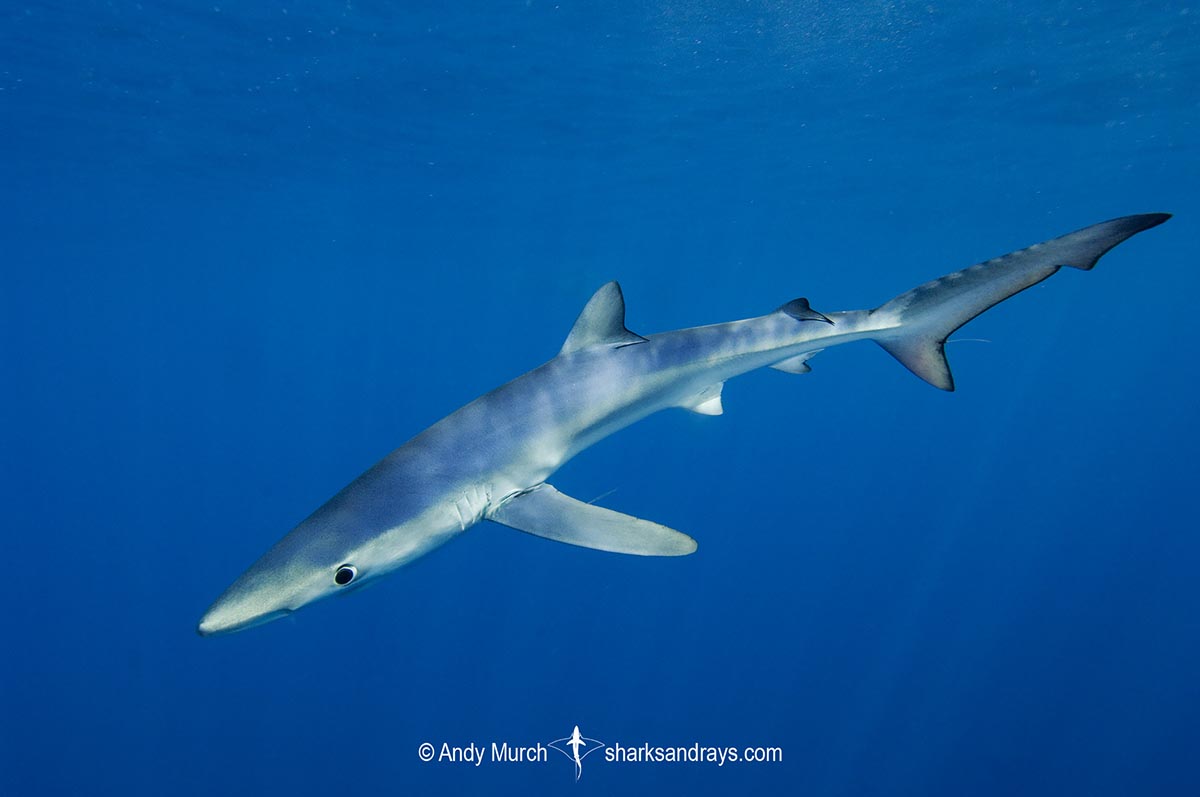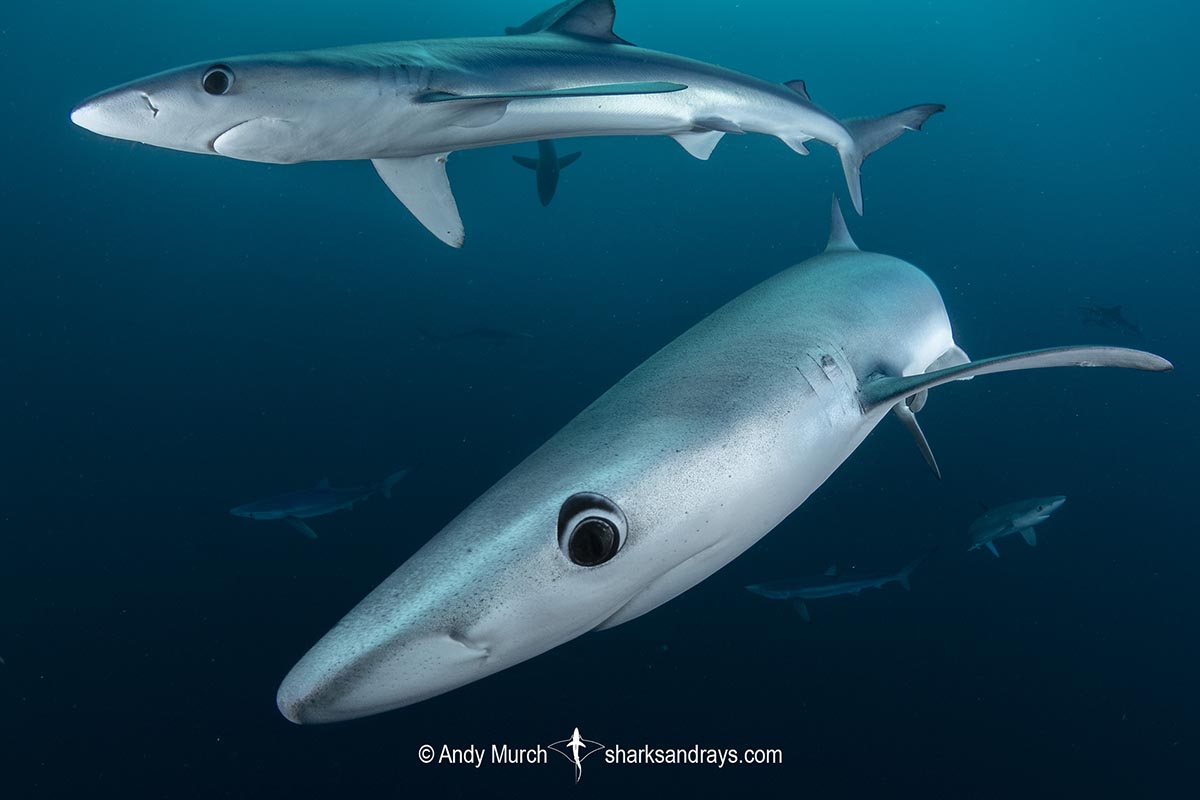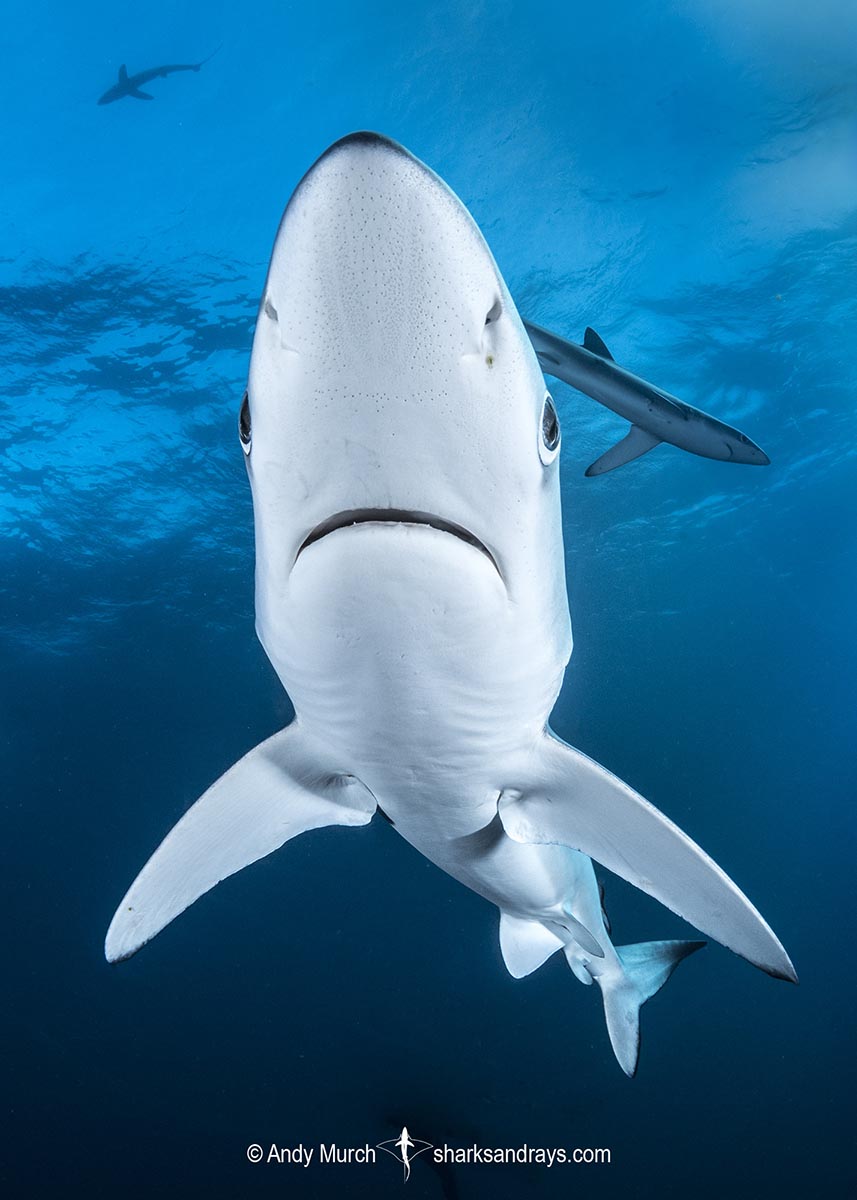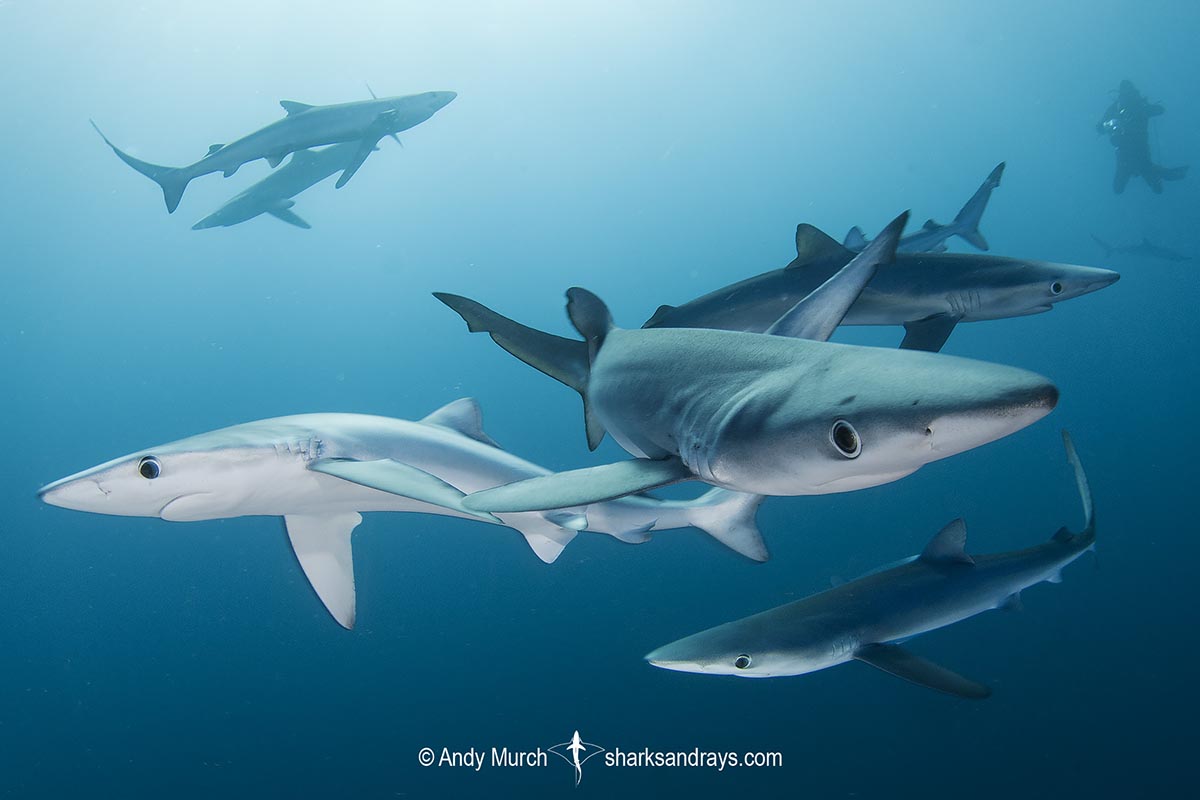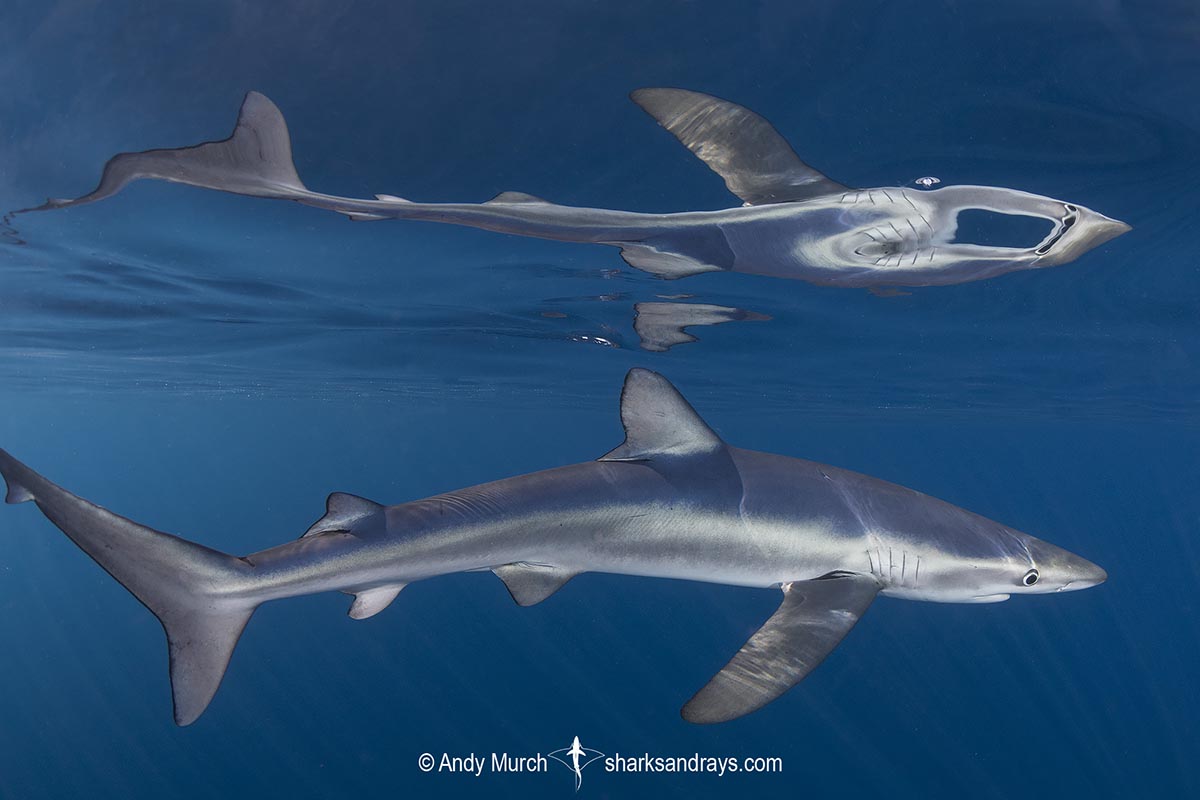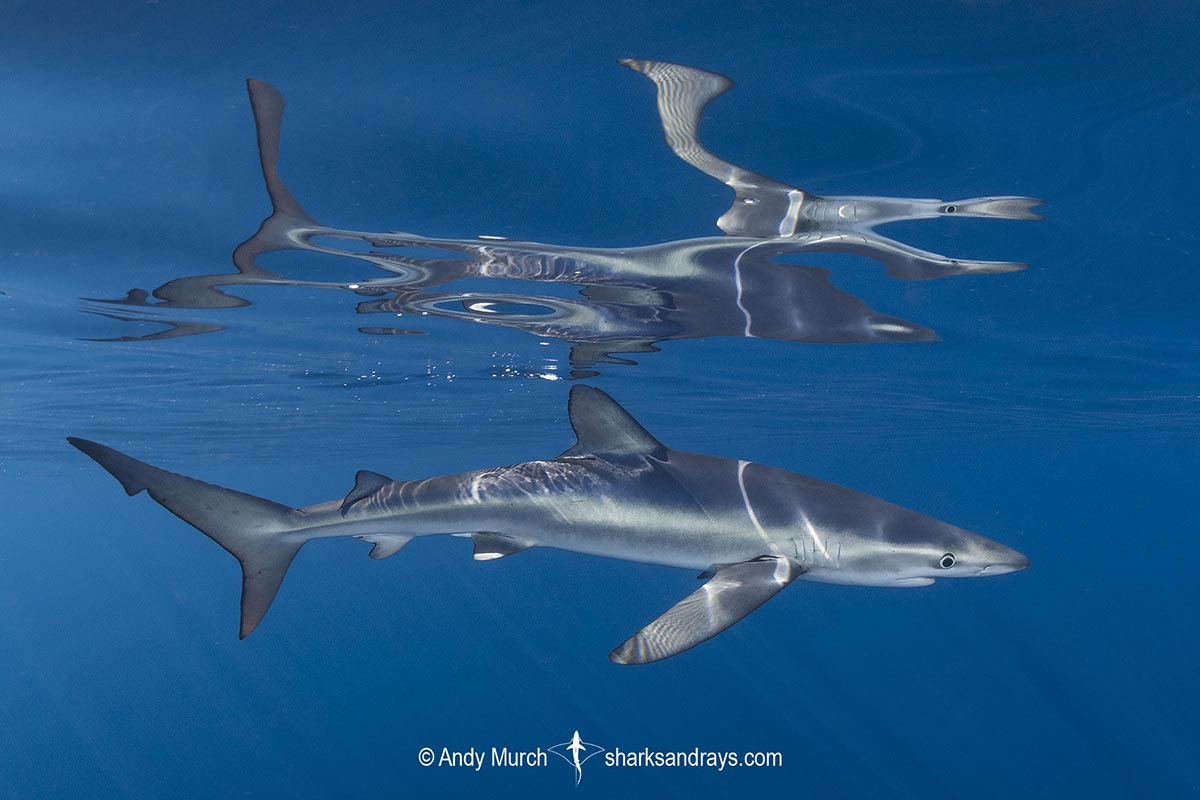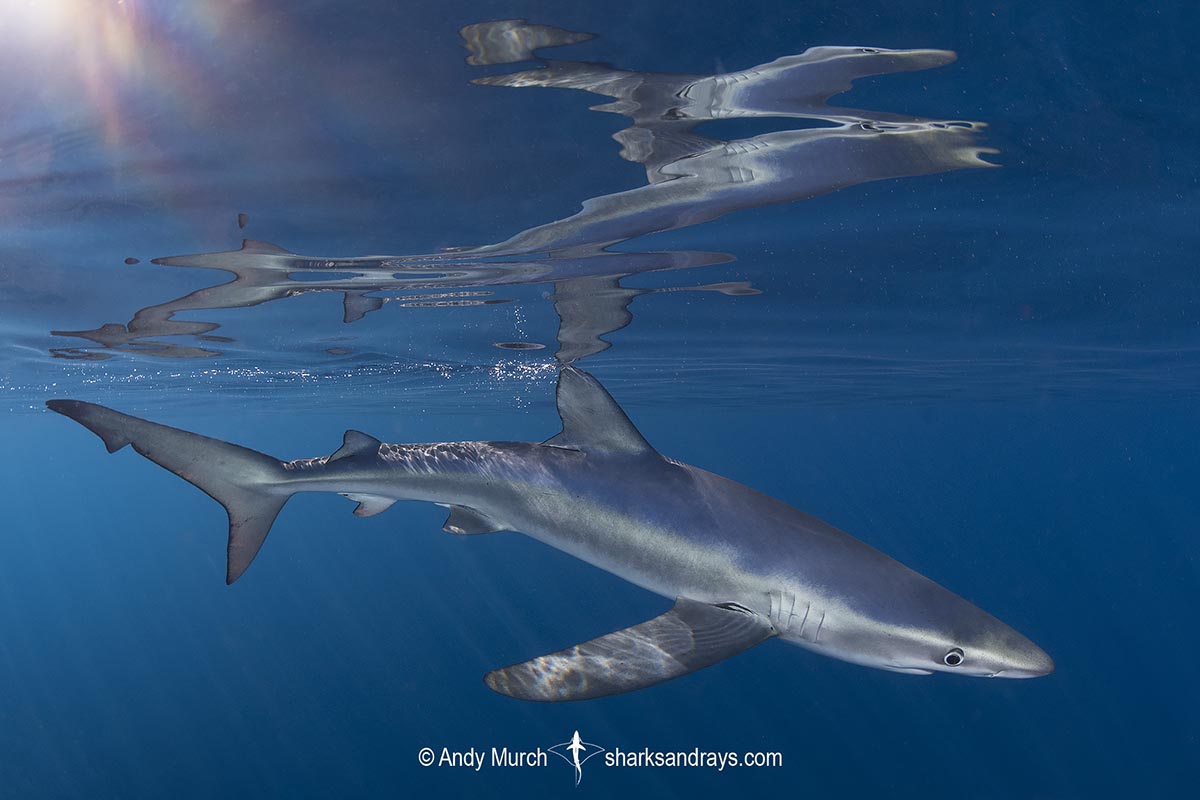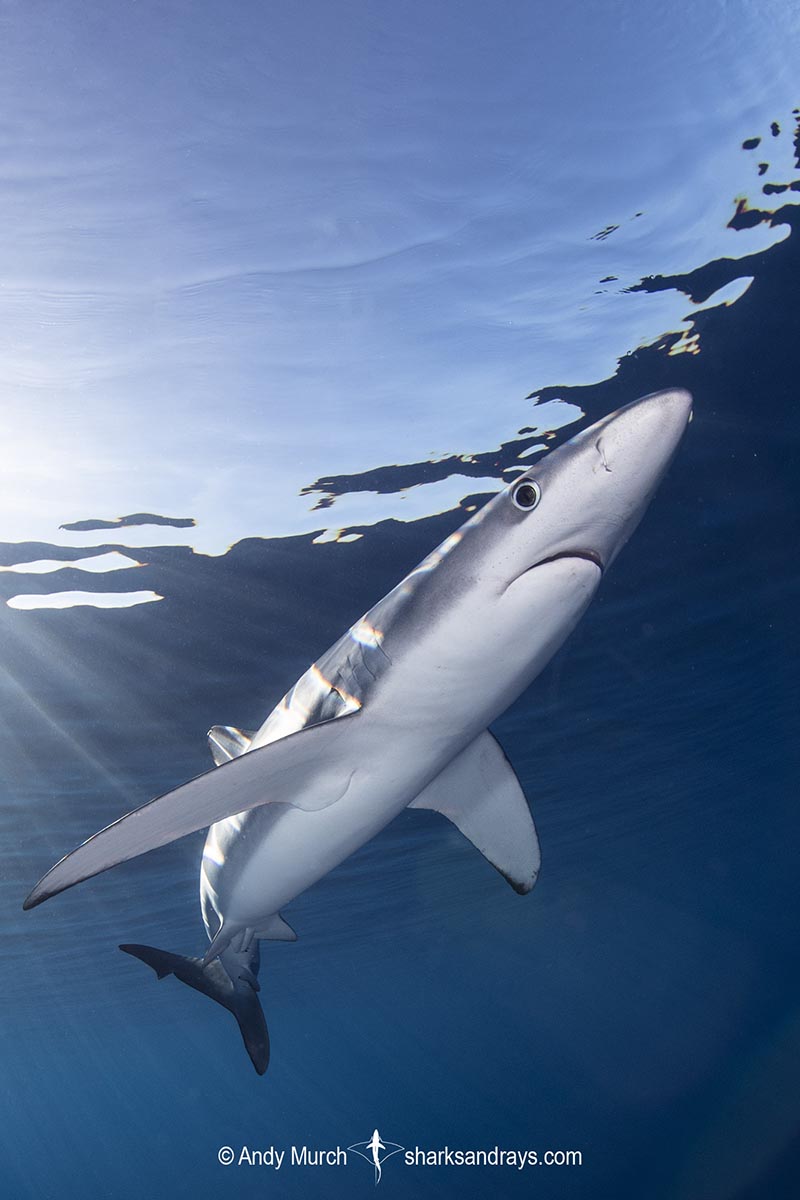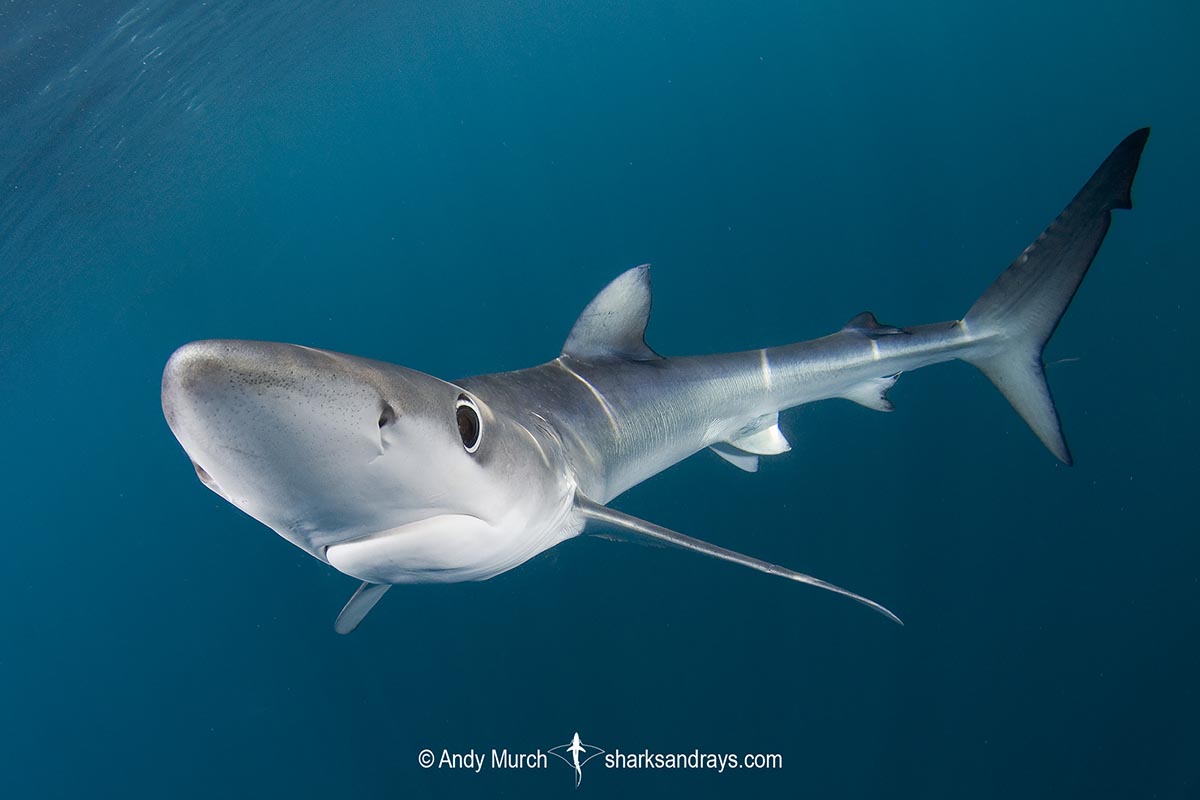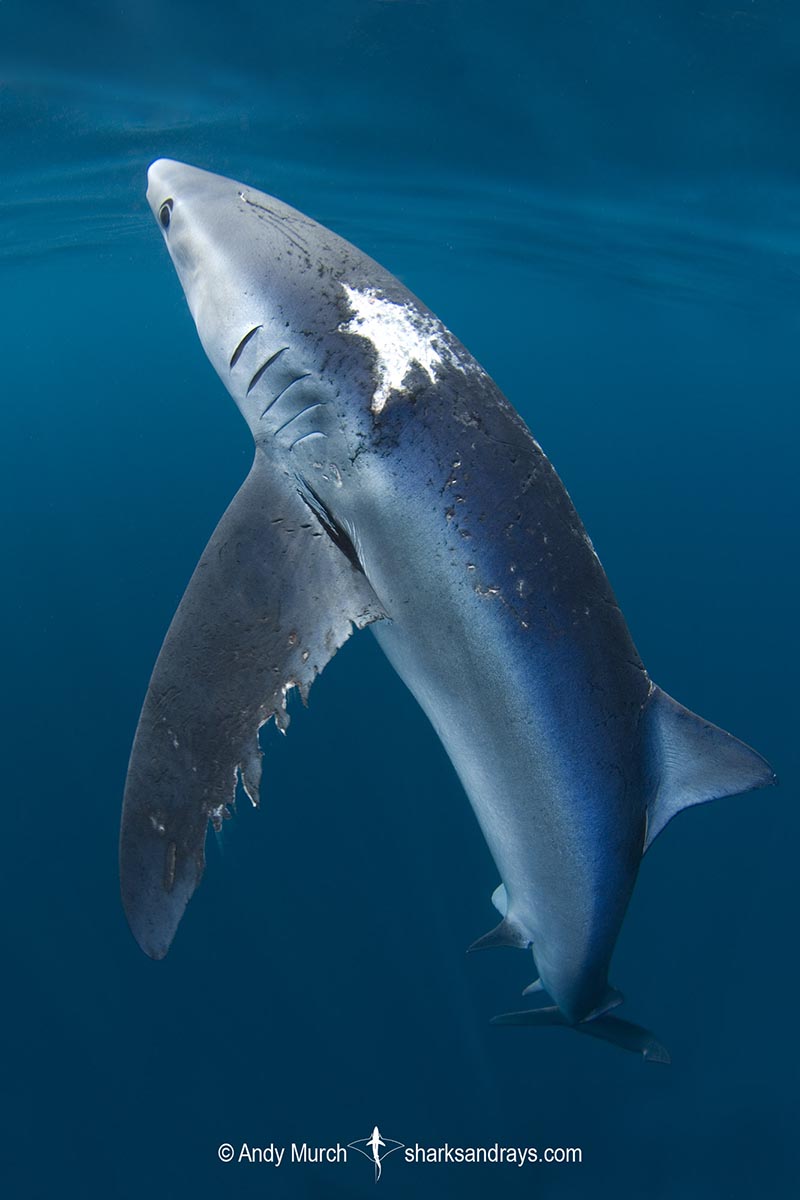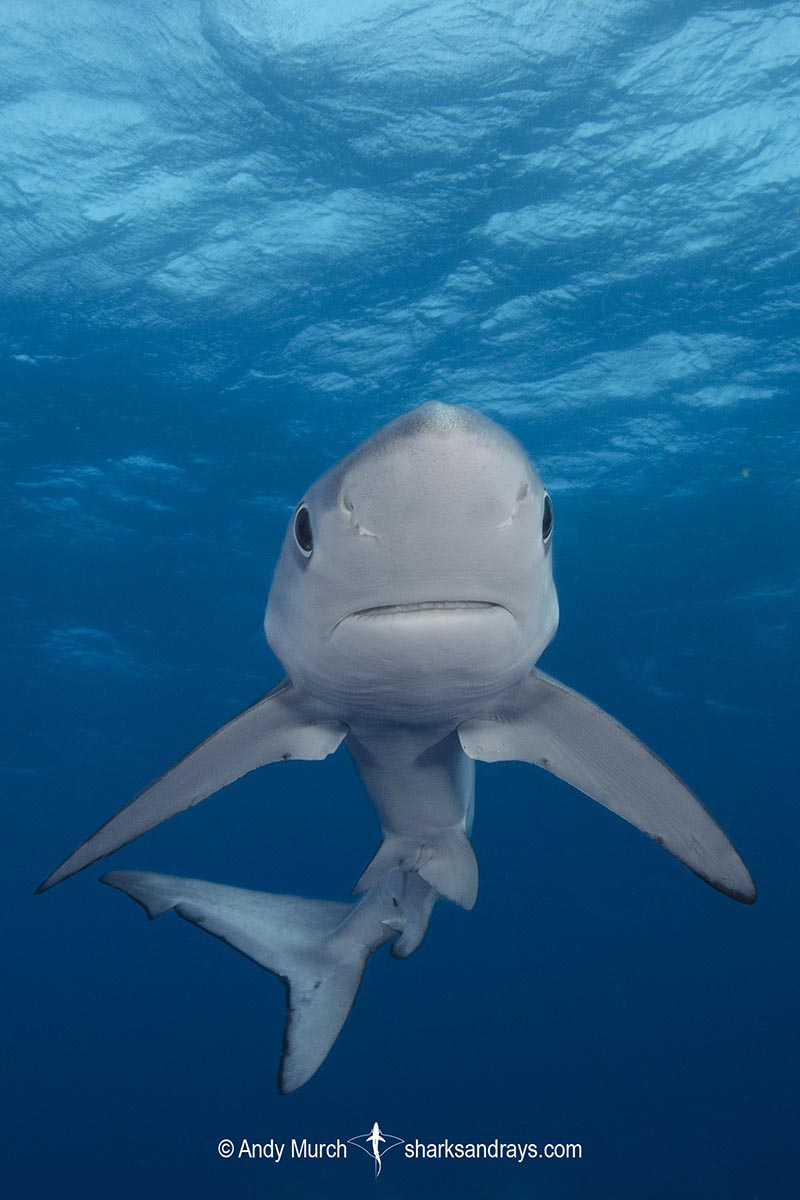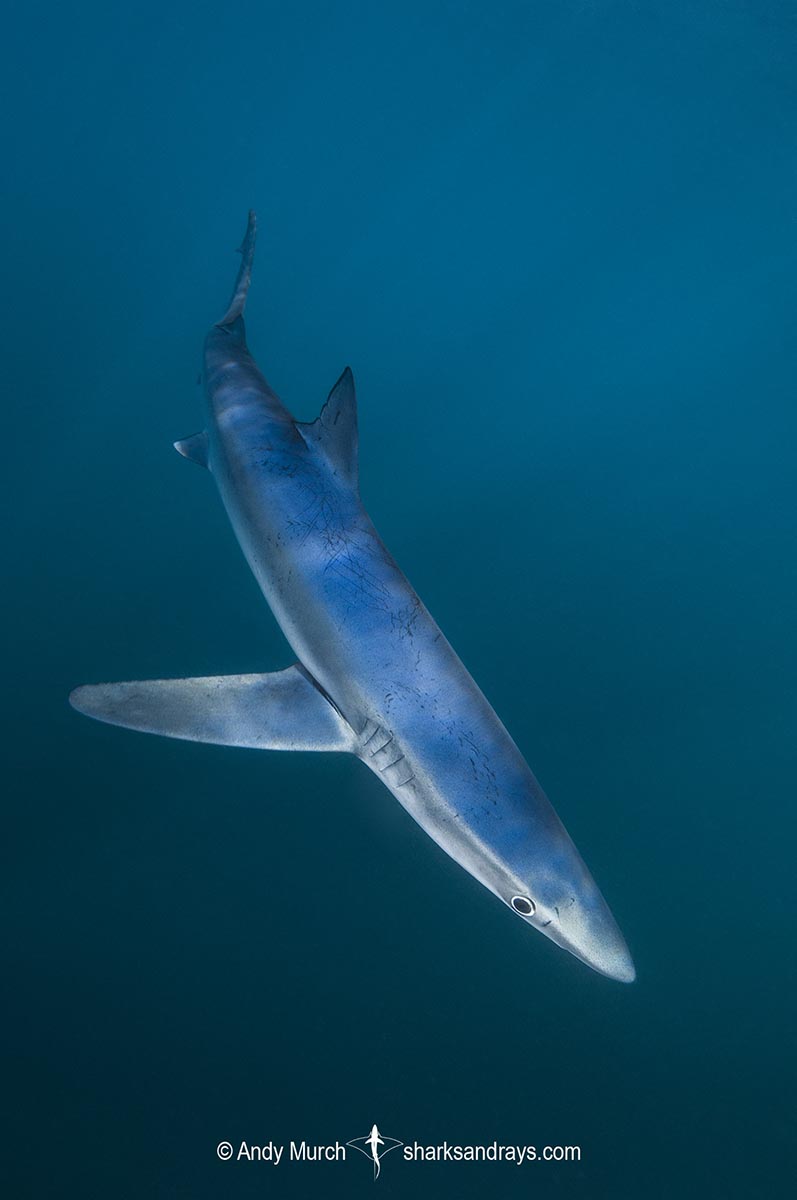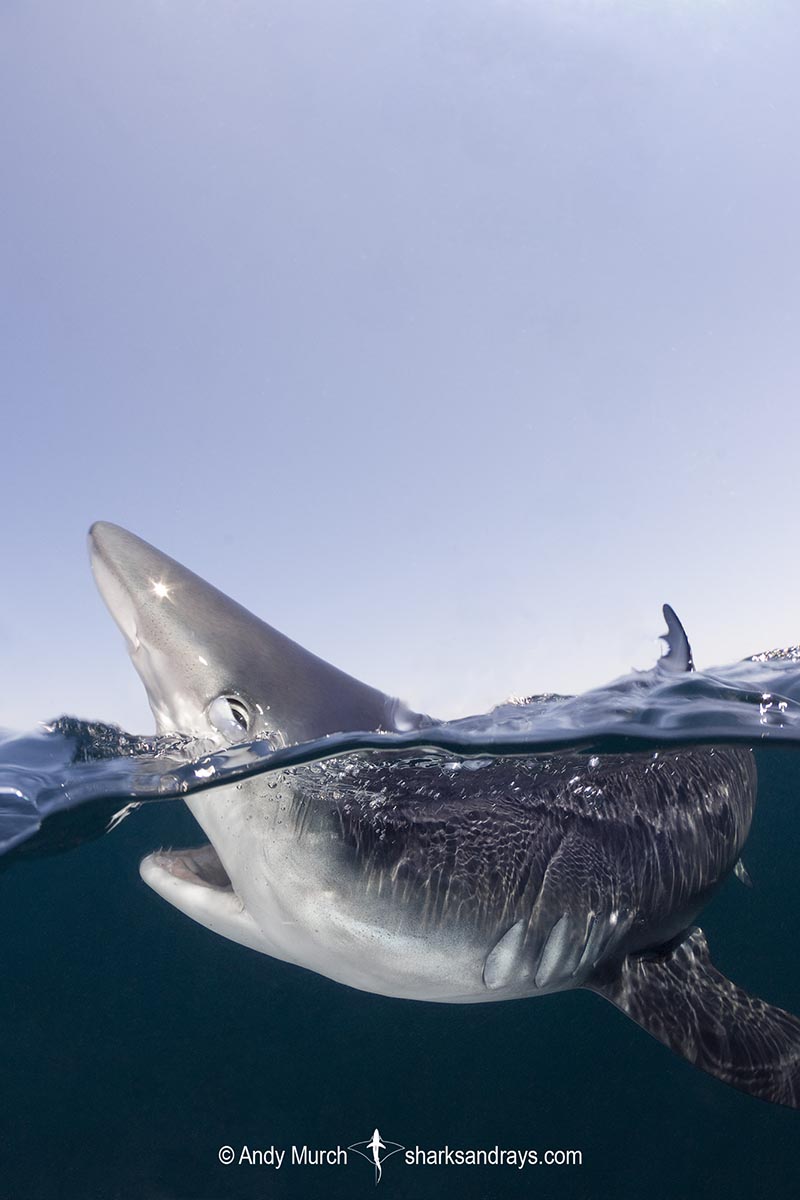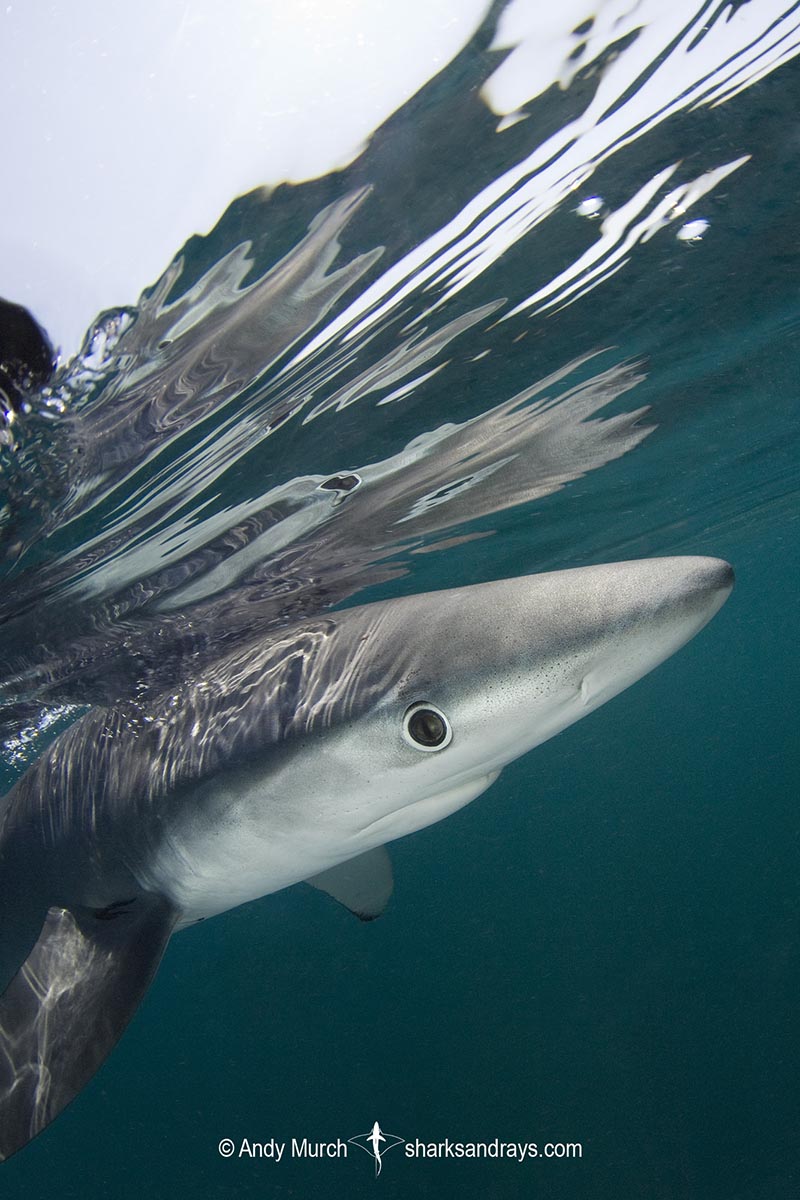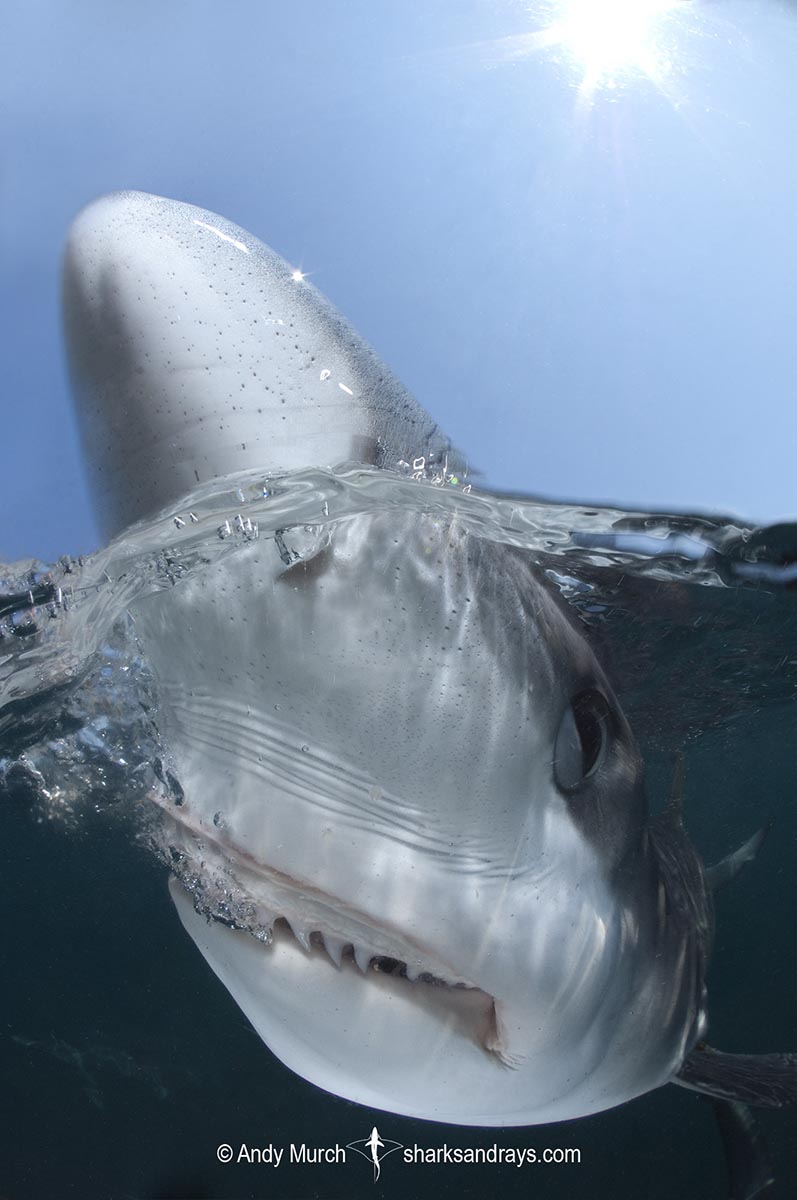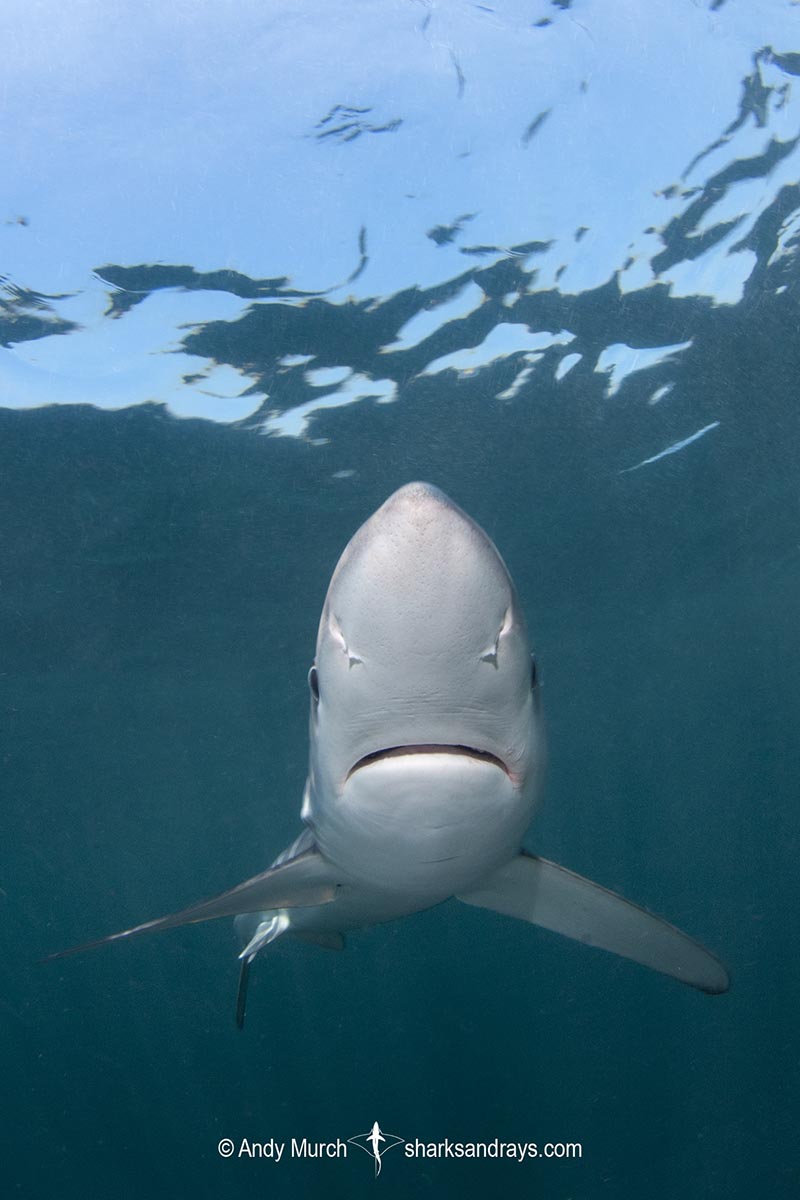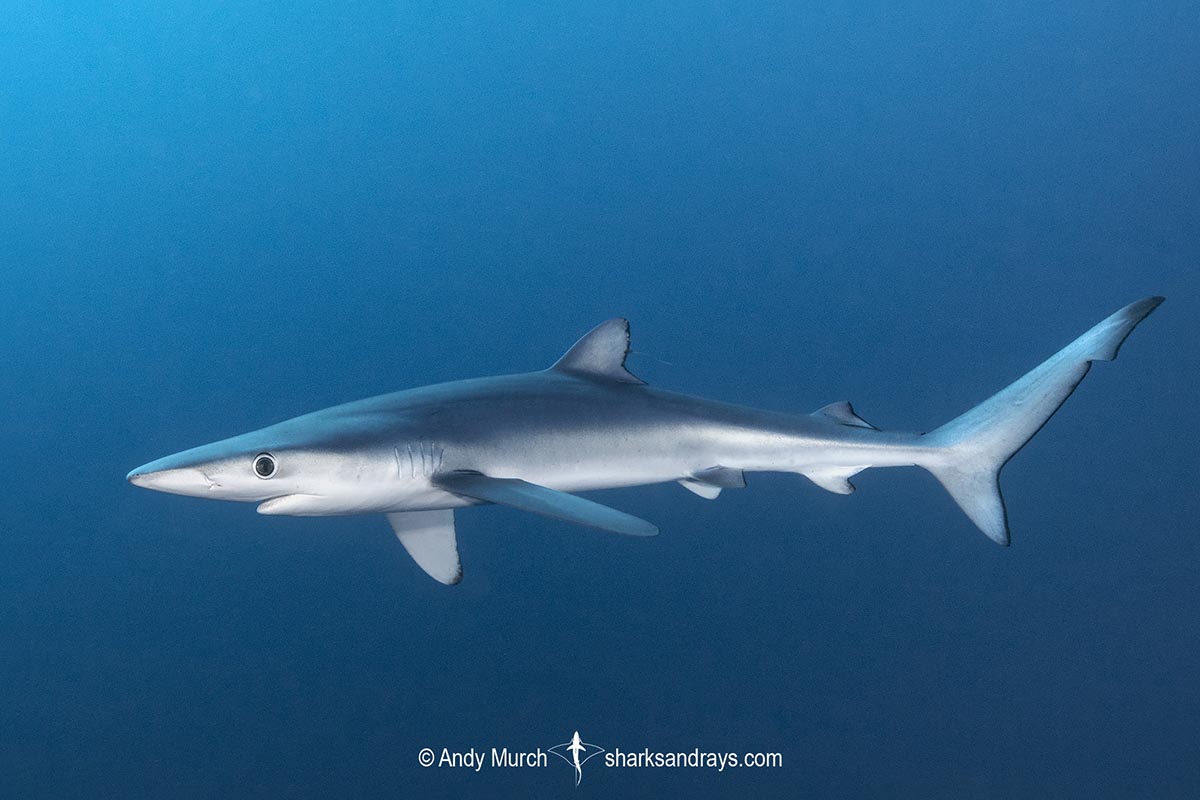Common name(s)
Blue Shark.
Binomial
Prionace glauca
Synonyms
Carcharhinus macki, Carcharias aethiops, Carcharias glaucus, Carcharias gracilis, Carcharias hirundinaceus, Carcharias pugae, Carcharias rondeletii, Carcharinus glaucus, Galeus thalassinus, Glyphis glaucus, Hypoprion isodus, Isurus glaucus, Prionace mackiei, Prionacea glauca, Squalus adscensionis, Squalus caerule, Squalus glaucus, Squalus rondeletii, Thalassinus rondeletii, Thalassinus rondeletti, Thalassinus rondelettii, Thalassorhinus vulpecula.
Identification
A large, slender requiem shark. Snout long. First dorsal low, with a rounded apex. First dorsal base approximately half way between pectoral fin and anal fin. Pectoral fins long and thin. Dorsal coloration shades of blue and grey; darker blue on top, brighter blue with metallic hues on the flanks. Ventrum white.
Size
Maximum length 383cm. Size at birth 35-44cm.
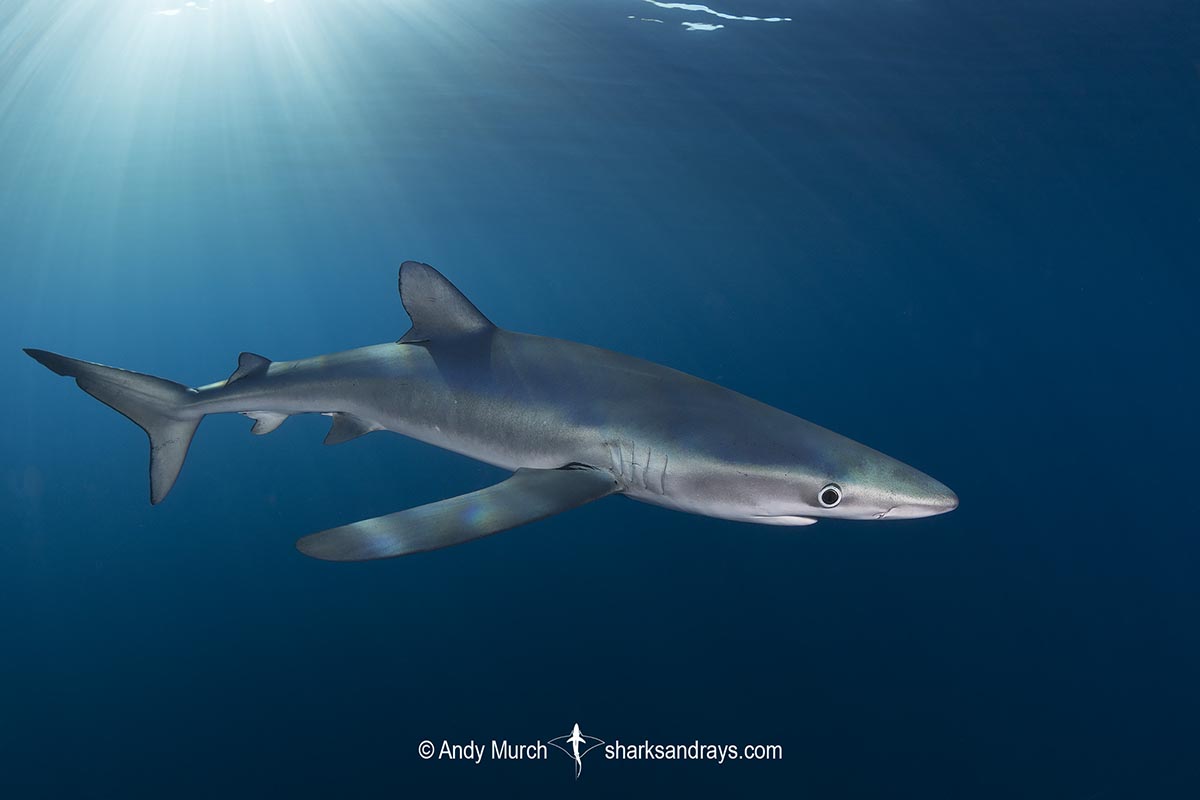
Conservation Status
NEAR THREATENED
The blue shark has the highest known population growth rates among pelagic sharks, but the global population is still decreasing.
Blue sharks are heavily targeted for their fins in industrial pelagic longline fisheries both offshore and in high seas regions. Demand for their meat may also be increasing. The heaviest population reductions have occuredin the north and south Atlantic. It is estimated that blue shark populations have decreased by 20-29% in the last three decades.

Habitat
Sub-tropical and temperate seas. The blue shark is an oceanic species that is rarely found inshore. Surface to 1000m. Generally found deeper at warmer latitudes.
Distribution
Blue sharks are present across all temperate and subtropical oceans.
Reproduction
A viviparous species with yolk-sac placenta. The blue shark is one of the most prolific sharks with up to 135 pups per litter. 50-80 pups is not uncommon. Gestation is approximately 12 months.
Diet
Blue sharks are opportunistic feeders that will predate on whatever is readily available. Diet usually consists of squid and schooling bony fishes such as anchovies, sardines, and herring. Will also consume crustaceans, and small sharks.
Behavior
Blue sharks are highly migratory ocean wanderers. Tagging studies have recorded them making trans-Atlantic crossings. Due to their oceanic nature, not much is known about their seasonal behavior other than movements towards cooler latitudes when ocean temperatures climb. Blue sharks are known to segregate by gender and size.
Reaction to divers
Inquisitive but not normally aggressive. In baited situations, blue sharks will remain next to divers for many hours even after the bait has been exhausted.
Diving logistics
In the Eastern Pacific there are baited snorkeling trips that leave from Cabo San Lucas in Baja. The water there is usually extremely clear. The appearance of blue sharks is seasonally dependent, with the greatest number of blue sharks present in February and March. Day trips generally attract multiple blue sharks and shortfin mako sharks. Towards late March, blue shark numbers decrease but there is a greater opportunity to see smooth hammerheads. Big Fish Expeditions runs trips in early March when there is an opportunity to see all three species at once.
In San Diego, there are a couple of operators running blue and mako trips. Makos are a bit hit and miss but the blue shark activity is fairly consistent.
Off Rhode Island and Massachusetts in the northwest Atlantic, there are well established operators offering blue shark and mako shark trips over the summer months when the gulf stream moves closer to shore.
Off Pico Island in the Azores, there is a popular blue shark snorkel/dive which consistently attracts a small number of sharks over the summer. The operators also run trips to Princess Alice Bank which is the best spot to see large Chilean Devilrays.
During the summer months, there are a couple of operators in the UK offering blue shark dives. On rare occasions, porbeagle sharks have been known to make an appearance.
Off of the Western Cape in South Africa, there is an excellent blue and mako shark dive that attracts more blues than I have seen anywhere else in the world. One year I estimate we had more than 100 blue sharks in attendance. To reach the right temperatures and find the best water clarity, the boat has to go about 2hrs away from shore into the South Atlantic. Not surprisingly, this is a weather dependent dive, but one that should not be missed when conditions permit.
Similar species
Shortfin Mako Shark Makos have a very similar coloration and they are often seen in the same areas as blue sharks. However, they are easily distinguished by their conical snout, exposed rows of curved teeth, and lunate caudal fin.

